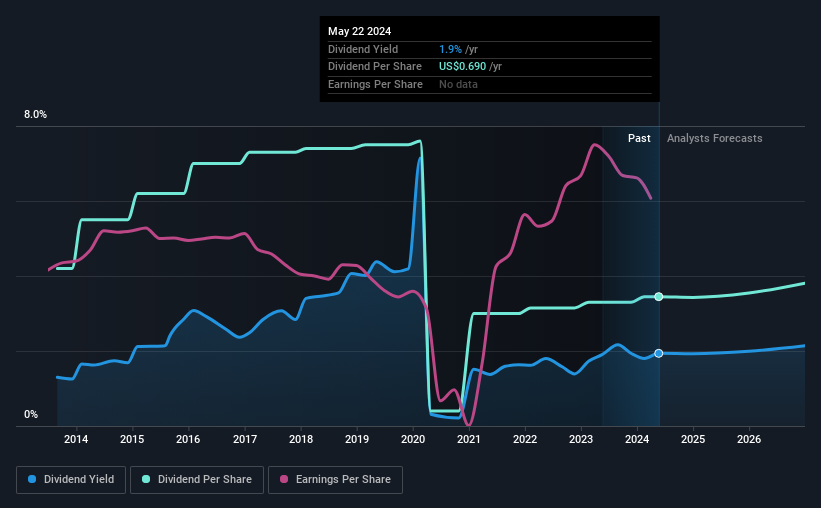Harley-Davidson (NYSE:HOG) Will Pay A Dividend Of $0.1725
The board of Harley-Davidson, Inc. (NYSE:HOG) has announced that it will pay a dividend of $0.1725 per share on the 21st of June. This means the dividend yield will be fairly typical at 1.9%.
See our latest analysis for Harley-Davidson
Harley-Davidson's Dividend Is Well Covered By Earnings
We like a dividend to be consistent over the long term, so checking whether it is sustainable is important. Before making this announcement, Harley-Davidson was easily earning enough to cover the dividend. As a result, a large proportion of what it earned was being reinvested back into the business.
Looking forward, earnings per share is forecast to rise by 12.3% over the next year. If the dividend continues along recent trends, we estimate the payout ratio will be 12%, which is in the range that makes us comfortable with the sustainability of the dividend.
Dividend Volatility
The company's dividend history has been marked by instability, with at least one cut in the last 10 years. The dividend has gone from an annual total of $0.84 in 2014 to the most recent total annual payment of $0.69. This works out to be a decline of approximately 1.9% per year over that time. A company that decreases its dividend over time generally isn't what we are looking for.
Harley-Davidson Could Grow Its Dividend
With a relatively unstable dividend, it's even more important to see if earnings per share is growing. It's encouraging to see that Harley-Davidson has been growing its earnings per share at 9.8% a year over the past five years. A low payout ratio and decent growth suggests that the company is reinvesting well, and it also has plenty of room to increase the dividend over time.
Harley-Davidson Looks Like A Great Dividend Stock
In summary, it is good to see that the dividend is staying consistent, and we don't think there is any reason to suspect this might change over the medium term. The company is easily earning enough to cover its dividend payments and it is great to see that these earnings are being translated into cash flow. All in all, this checks a lot of the boxes we look for when choosing an income stock.
Market movements attest to how highly valued a consistent dividend policy is compared to one which is more unpredictable. Still, investors need to consider a host of other factors, apart from dividend payments, when analysing a company. Just as an example, we've come across 2 warning signs for Harley-Davidson you should be aware of, and 1 of them is significant. Looking for more high-yielding dividend ideas? Try our collection of strong dividend payers.
Have feedback on this article? Concerned about the content? Get in touch with us directly. Alternatively, email editorial-team (at) simplywallst.com.
This article by Simply Wall St is general in nature. We provide commentary based on historical data and analyst forecasts only using an unbiased methodology and our articles are not intended to be financial advice. It does not constitute a recommendation to buy or sell any stock, and does not take account of your objectives, or your financial situation. We aim to bring you long-term focused analysis driven by fundamental data. Note that our analysis may not factor in the latest price-sensitive company announcements or qualitative material. Simply Wall St has no position in any stocks mentioned.

 Yahoo Finance
Yahoo Finance 
